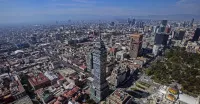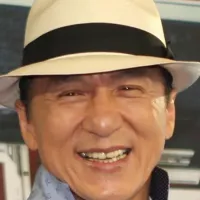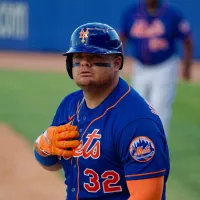Acapulco de Juárez, or simply Acapulco, is a major city and seaport located in the state of Guerrero on Mexico's Pacific Coast, south of Mexico City. Situated on a deep, semicircular bay, it has functioned as a port since early colonial times, serving shipping and cruise lines traveling between Panama and San Francisco. Acapulco is the largest city in Guerrero and Mexico's largest beach resort city. It also serves as the municipal seat for the municipality of Acapulco, Guerrero.
1911: Revolutionary Forces Take Over Acapulco's Plaza
In 1911, revolutionary forces took over the main plaza of Acapulco.
1920: Prince of Wales Visits Acapulco
In 1920, the Prince of Wales (later King Edward VIII) visited Acapulco and, impressed by the area, recommended it to Europeans, which increased its popularity among the elite.
1933: Hotel El Mirador's first section started
In 1933, Carlos Barnard started the first section of Hotel El Mirador, with 12 rooms on the cliffs of La Quebrada.
1958: Underwater Statue of the Virgin of Guadalupe Created
In 1958, Armando Quesado created an underwater statue of the Virgin of Guadalupe in memory of a group of divers who died there.
1963: Fun in Acapulco Movie Released
The 1963 Hollywood movie "Fun in Acapulco", starring Elvis Presley, is set in Acapulco, but filming took place in the United States.
1968: Acapulco Hosts Sailing Events for Summer Olympics
For the 1968 Summer Olympics in neighboring Mexico City, Acapulco hosted the sailing (then yachting) events.
1972: Pierre Marqués Golf Course Designed
In 1972, Robert Trent Jones designed the Pierre Marqués golf course for the World Cup Golf Tournament.
1976: Baby 'O Nightclub Opens
Baby 'O nightclub has been open to the national and international public since 1976 and different celebrities have visited their installations such as Mexican singer Luis Miguel, Bono from U2 and Sylvester Stallone.
1978: Miss Universe Pageant Held in Acapulco
The Miss Universe 1978 pageant took place in the city.
1983: Juan Gabriel writes "Amor eterno"
In 1983, singer-songwriter Juan Gabriel wrote the song "Amor eterno", which pays homage to Acapulco. The song was first and most famously recorded by Rocío Dúrcal.
1983: Acapulco Becomes Archdiocese
In 1983, the Diocese of Acapulco was elevated to an archdiocese.
1993: Start of the Mexican Open tennis tournament
In 1993, the Mexican Open tennis tournament, an ATP 500 event, began in Acapulco. It has been held there since, initially on clay courts but later changed to hard courts.
1996: API Acapulco Created
In 1996, a new private company, API Acapulco, was created to manage port operations, consolidating them and making Acapulco a major port for car exports to the Pacific.
1997: Hurricane Pauline Devastates Acapulco
In 1997, Hurricane Pauline devastated Acapulco, stranding tourists and causing over 100 deaths, especially in the shantytowns built on steep hillsides.
2000: Fort of San Diego Renovations
The Fort of San Diego had renovations done to it in 2000.
2005: Population of the metropolitan area
As of 2005, the Acapulco metropolitan area (Acapulco de Juárez and Coyuca de Benitez) had a population of 786,830.
2006: Start of fighting the cartels
Since 2006, soldiers have been fighting the cartels in Acapulco.
2006: Decline in International Flyers to Acapulco Begins
Starting in 2006, the number of international flyers coming to Acapulco began to decline significantly.
2008: High Student Turnout for Spring Break
In 2008, Acapulco saw a large influx of students for spring break, with 22,500 students visiting the city.
February 2009: US State Department Issues Travel Alert
In February 2009, the US State Department issued a travel alert for college students planning spring break trips to Acapulco, due to violent activity from drug cartels. This led some schools to warn students about the risks of traveling to Mexico. Bill O'Reilly also urged students to avoid Acapulco on his show, The O'Reilly Factor.
June 2009: Drug Cartel Incidents
In June 2009, Acapulco saw a number of incidents between drug cartels and the government, including attacks on police headquarters and open battles in the streets. However, no violence against spring break travelers was reported.
December 2009: Death of Arturo Beltrán Leyva
The death of Arturo Beltrán Leyva in December 2009 led to infighting within the Beltrán Leyva cartel.
2009: Visitors to Acapulco During Christmas Season
During the Christmas season of 2009, Acapulco received 470,000 visitors, mostly Mexican nationals, adding 785 million pesos to the economy.
2009: Decline in Spring Break Tourism
In 2009, Hotels in Acapulco did not get as many spring break tourists as in 2008. This was due to the economic situation in the United States, and partially because of scares of drug-related violence.
March 13, 2010: Drug-Related Violence in Acapulco
On March 13, 2010, at least 15 people died in drug-related violence in Acapulco, including six members of the city police and the brother of an ex-mayor.
June 12, 2010: Acapulco's Population Counted by INEGI
According to the II Population and Housing Census 2010 carried out by the National Institute of Statistics and Geography (INEGI) with a census date of June 12, 2010, the city of Acapulco had a total population of 673,479 inhabitants.
2010: American Teenagers and Young Adults Travel to Mexico for Spring Break
Before 2010, over 100,000 American teenagers and young adults traveled to resort areas and balnearios throughout Mexico during spring break each year. The main reason students head to Mexico is the drinking age of 18 years (versus 21 for the United States).
2010: Official Delimitation of the Metropolitan Area
In 2010, according to the official delimitation by the National Institute of Statistics and Geography, the National Council of Population, and the Secretariat of Social Development, the metropolitan area of Acapulco grouped 863,431 inhabitants in a surface of 3,538.5 km.
January 8, 2011: Fifteen Deaths in Acapulco
On January 8, 2011, the headless bodies of 15 young men were found dumped near the Plaza Sendero shopping center.
August 20, 2011: Discovery of Headless Bodies in Acapulco
On August 20, 2011, Mexican authorities reported that five headless bodies were found in Acapulco, three of which were placed in the city's main tourist area.
February 4, 2013: Spanish Tourists Attacked in Acapulco
On February 4, 2013, six Spanish men were tied up and robbed and the six Spanish women with them were gang-raped by five masked gunmen who stormed a beach house on the outskirts of Acapulco, though after these accusations, none of the victims decided to press charges.
September 28, 2014: Politician Braulio Zaragoza Gunned Down
On September 28, 2014, Mexican politician Braulio Zaragoza was gunned down at the El Mirador hotel in Acapulco.
2014: Nomination Idea for the Manila-Acapulco Galleon Trade Route
In 2014, the idea to nominate the Manila-Acapulco Galleon Trade Route was initiated by the Mexican ambassador to UNESCO with the Filipino ambassador to UNESCO.
2014: Upsurge in Gang Violence
Since 2014, Acapulco has experienced a massive upsurge in gang violence and homicide numbers, leading to a decline in foreign tourism.
April 23, 2015: Experts' Roundtable Meeting at the University of Santo Tomas
On April 23, 2015, an Experts' Roundtable Meeting was held at the University of Santo Tomas (UST) as part of the preparation for the possible transnational nomination of the Manila-Acapulco Galleon Trade Route to the World Heritage List, jointly with Mexico.
2015: Significant Drop in International Tourists Flying to Acapulco
By 2015, the number of international tourists flying to Acapulco had dropped 85% compared to 2006, reflecting a significant loss in popularity.
June 2016: Implementation of the Acabús
On June 25, 2016, the bus network in Acapulco was simplified with the implementation of the Acabús. This bus rapid transit system spans 36.2 kilometers and has 16 stations along five routes, with prepayment for boarding.
2016: High Homicide Rate in Acapulco
In 2016, Acapulco recorded 918 murders, resulting in a homicide rate of 103 in every 100,000 people, making it one of the highest in the world.
September 2018: Military disarms police force
In September 2018, the military disarmed Acapulco's entire police force due to suspicions of infiltration by drug gangs.
2018: Mexican Armed Forces Occupy Acapulco
In 2018, the Mexican Armed Forces entered Acapulco, placing it under occupation and disarming the police department due to alleged links to cartels.
February 2020: End of Calandrias in Acapulco
In February 2020, the practice of tourists riding around the city in colorful horse-drawn carriages known as calandrias ended due to concerns about mistreatment of the animals.
2020: Population Decline in Acapulco
The 2020 census counted 658,609 people in the locality and 779,566 in the municipality of Acapulco, a small drop from the last census.
2022: Acapulco named one of the deadliest cities in the world
As of 2022, Acapulco is the ninth deadliest city in Mexico and the tenth deadliest city in the world, prompting the US government to warn its citizens against traveling there.
October 25, 2023: Hurricane Otis Devastates Acapulco
On October 25, 2023, Hurricane Otis, a Category 5 hurricane, caused widespread devastation throughout Acapulco while making landfall nearby.
September 2024: Hurricane John causes widespread flooding and significant damage
In late September 2024, Hurricane John struck Acapulco and Mexico's Pacific coast as a Category 3 hurricane, delivering powerful winds and extreme rainfall that led to widespread flooding and significant damage. Acapulco experienced nearly one meter of rainfall, resulting in submerged neighborhoods and serious disruptions. Around 40,000 homes were damaged impacting over 150,000 residents.
Mentioned in this timeline

Elvis Presley the King of Rock and Roll was a...

Christmas is an annual festival celebrated on December th commemorating...

Mexico City is the capital and largest city of Mexico...

The horse scientifically known as Equus ferus caballus is a...
Mexico officially the United Mexican States is a North American...

War is defined as an armed conflict involving the organized...
Trending

5 months ago Jackie Chan's Career, Lucy Liu's Western Flop, and Son Jaycee's Derailment Explored.

Kliff Kingsbury is an American football coach currently serving as the offensive coordinator for the Washington Commanders in the NFL...

Derek Hough is an accomplished American dancer choreographer actor singer and television personality He is best known for his record-breaking...

Daniel Taylor Vogelbach is an American professional baseball designated hitter currently playing for the Toronto Blue Jays His career in...

Jon Gruden is a former American football coach and media personality He achieved significant success as the head coach of...
Massachusetts officially the Commonwealth of Massachusetts is a state located in the New England region of the Northeastern United States...
Popular

Stranger Things created by the Duffer Brothers is a popular...

XXXTentacion born Jahseh Dwayne Ricardo Onfroy was a controversial yet...

Kelsey Grammer is an accomplished American actor producer and singer...

Candace Owens is an American conservative political commentator and author...

Melania Trump a Slovenian-American former model has served as First...

Bernie Sanders is a prominent American politician currently serving as...
